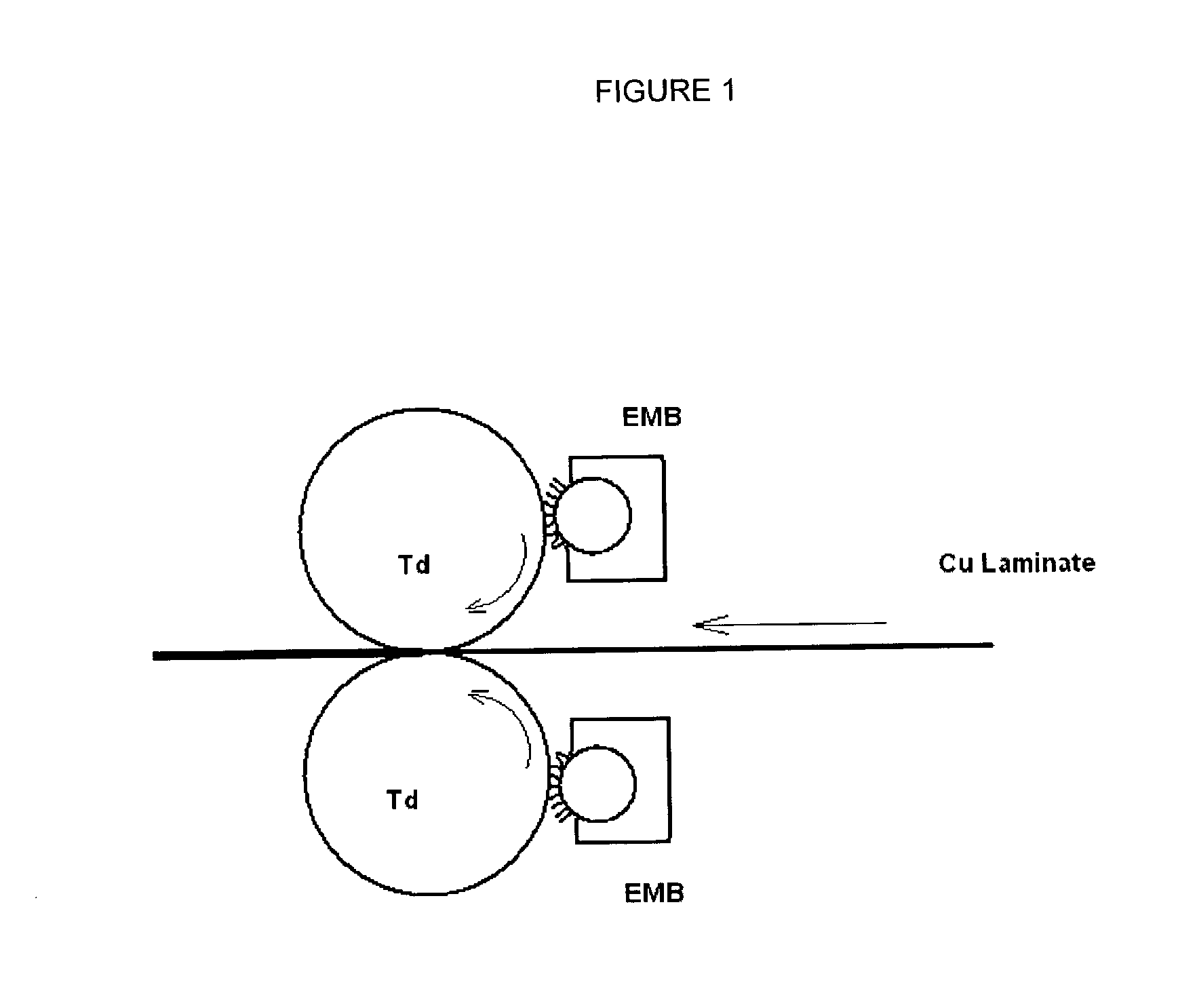UV curable powder suitable for use as a photoresist
a curable powder and photoresist technology, applied in the field of uv curable powder suitable for use as a photoresist, can solve the problems of reducing the resolution of the pcb to be obtained, reducing the resolution of the pcb, so as to achieve the effect of better resolution
- Summary
- Abstract
- Description
- Claims
- Application Information
AI Technical Summary
Benefits of technology
Problems solved by technology
Method used
Image
Examples
example i
[0121] Preparation of a Powder Photoresist 10 kg of powder photoresist was prepared by premixing all the components presented in Table 2 by the Wt. % ratio in a "Diosna" V-30 batch mixer.
2 TABLE 2 Components Wt. % CarbosetGA 1160 13.3 CAP-UV-100 8.2 Joncryl 694 45.2 SR-368 4.8 SR-349 4.5 SR-295 15.4 Irgacure 907 2.0 ITX 0.7 Quantacure EPD 2.2 Irgacure 819 1.2 Irgacure 2959 1.3 Benzotriazol 0.3 BYK-356 0.4 Victoria pure Blue BO 0.1 Irganox 1010 0.4
[0122] After mixing, the mixture was extruded on a Prizm Extruder at 168.degree. C. at 200 RPM. A clear extrudate was obtained without visible non-homogeneous inclusions. After cooling the extrudate, the extrudate was milled first in a hammer mill to a particle size <3 mm and then fed into a fluidized bed mill (Condux CFS8), having a nozzle diameter of 4 mm. The material was milled with 5 bar air overpressure at 1900 rpm of the classifier wheel incorporated in the mill obtaining a powder photoresist with a median particle size of 24 .mu.m a...
example ii
[0124] Preparation of a Carrier
[0125] 998 parts by weight Cu--Zn-ferrite powder, having a median particle size of 81 .mu.m and a ratio X.sub.75,3 / X.sub.25,3 of 1.32 (both measured with the laser granulometer Cilas HR 850), were dry coated with two parts by weight polyvinylidenedifluoride (Kynar 301F.TM.) by mixing both materials in a Lodige mixer and coating the polymer on the surface of the ferrite in a rotary kiln at 200.degree. C. under Nitrogen to obtain a carrier with a median size of 80 .mu.m, a ratio X.sub.75,3 / X.sub.25,3 of 1.32, a resistance of 1.1*10.sup.10 Ohm at a potential of 10V and a break-through voltage above 1,000V (both measured in a c-meter of Epping GmbH).
example iii
[0126] Preparation of EMB-Developer for Flexible Cu Laminated Substrate.
[0127] 20% by weight of the powder composition made according to Example 1 and 80% by weight of the carrier according to Example II were brought into the EMB-developer station OCE-2240, which is build in a prototype EMB-machine.
[0128] Total filling was 8 kg. The powder photoresist and the carrier were mixed for one minute in order to obtain an EMB-developer. The charging of the EMB-developer was measured in a Q / m of Epping GmbH, showing charge value of 15 .mu.Coulomb / g.
PUM
| Property | Measurement | Unit |
|---|---|---|
| Tg | aaaaa | aaaaa |
| Tg | aaaaa | aaaaa |
| Tg | aaaaa | aaaaa |
Abstract
Description
Claims
Application Information
 Login to View More
Login to View More - R&D
- Intellectual Property
- Life Sciences
- Materials
- Tech Scout
- Unparalleled Data Quality
- Higher Quality Content
- 60% Fewer Hallucinations
Browse by: Latest US Patents, China's latest patents, Technical Efficacy Thesaurus, Application Domain, Technology Topic, Popular Technical Reports.
© 2025 PatSnap. All rights reserved.Legal|Privacy policy|Modern Slavery Act Transparency Statement|Sitemap|About US| Contact US: help@patsnap.com

